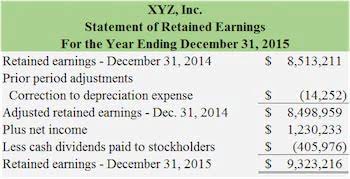
If so, then understanding how to record 401K employee contributions journal entries is essential to ensure accurate financial reporting. The 401K plan is one of the most popular retirement savings options in the United States, allowing employees to make pre-tax contributions from their salary. The matching principle, while essential, is often misunderstood or misapplied, leading to potential distortions in financial reporting. A common issue is the incorrect timing of expense recognition, particularly in industries with complex supply chains.

Examples of Matching Principle
The commission is recorded as accrued expenses in the sale ledger account period to prevent a fictitious profit. It is then deducted from accrued expenses in the subsequent period to prevent a fictitious loss when the representative is compensated. The matching principle is a cornerstone of accrual accounting, ensuring financial statements reflect the true economic activities of a business.
Expenses indirectly related to generating revenue
Businesses primarily follow the matching principle to ensure consistency in financial statements. The Internal Revenue Code (IRC) includes provisions requiring the matching of income and expenses for tax purposes. Section 451, which deals with income recognition, and Section 461, covering deductions, emphasize the importance of consistent application of the matching principle. This is match accounting especially relevant for industries like construction, where the percentage-of-completion method allows revenue and expenses to be recognized as a project progresses rather than upon completion. Investors typically want to see a smooth and normalized income statement where revenues and expenses are tied together, as opposed to being lumpy and disconnected.
What Is the Matching Concept in Accounting?
“MATCH provide much deeper, solid advice on all financial aspects of the business. We are a qualified accountancy firm that can deal with complex issues and situations faced by businesses and individuals. Let’s say a company just incurred $100 million in Capex to purchase PP&E at the end of Year 0. PP&E, unlike current assets such as inventory, has a useful life assumption greater than one year. For example, a business spends $20 million on a new location with the expectation that it lasts for 10 years.
Manual processing includes obtaining physical documents in the form of journals or ledgers. If the company is still stuck in traditional payment workflows, a large number of transactions involving clients and suppliers will be challenging. One effective way to improve payment processes and supplier relationships is to adapt the three-way matching process to your supply chain. Build a scoring system for suppliers based on their invoice accuracy track record.
Way Match Journal Entries – AP Accounting Simply Explained
- This alignment is critical for investors and analysts who view net income as a key indicator of a company’s profitability and operational efficiency.
- A performance obligation is a promise to transfer a good or service to a customer, and it can be explicit or implicit.
- Additionally, we provided an example to visualize how a journal entry for 401K employee contributions would look in practice.
- We’re going to look at what is the matching principle, why you need to understand it and an example.
- This is especially relevant for industries like construction, where the percentage-of-completion method allows revenue and expenses to be recognized as a project progresses rather than upon completion.
- The matching concept, also known as the matching principle or accrual accounting principle, is a fundamental concept in accounting that guides the recognition of revenues and expenses.
Long-term assets like machinery or office buildings don’t just wear out overnight. By stretching their costs across their useful life, you match the expense of long-term assets with the income they help produce. It’s like slicing a cake for guests arriving at different times; each slice represents the asset’s expense for that period. Following these steps will help you accurately record journal entries for 401K employee contributions, ensuring a clear and transparent record of these transactions.
- Below is a break down of subject weightings in the FMVA® financial analyst program.
- If you violate the matching principle when producing financial statements, the accuracy and reliability of those statements will be compromised.
- Learn how to record 401K employee contributions with this comprehensive guide.
- It commits to ensuring that the financial results of a period rightly mirror the economic activities that occurred.
- These accounts hold no amount until and unless a new transaction is completed on a future date.
- By managing these concepts effectively, a company can improve its financial health and ensure long-term success.
Based on this time period and revenue recognized the matching principle is used to determine the expenses to be included. These businesses report commission expenses on the December income statement. In this case, they report the commission in January because it is the payment month. The alternative is reporting the expense in December, when they incurred the expense. Under Generally Accepted Accounting Principles (GAAP) and International Financial Reporting Standards (IFRS), the matching principle is a fundamental requirement.
No cash is received in Year 2 as the product was sold on credit, so a cash inflow will not be recorded until Year 3 when the payment is settled. As we can see in this example, two transactions have been spread across a total of three years. This illustrates the importance of the matching principle as, even though the materials were purchased in year 1, they weren’t sold until year 2. If expenses were reported as soon as they occurred, then company statements would be very inconsistent and profit figures would not be comparable. A business might elect to only conduct a two-way match, which compares the authorizing purchase order to the supplier invoice, to ensure that the billed price is correct. This approach does not compare the receiving documentation to the supplier invoice, so there is a risk that the company will pay an invoice for an incorrectly-billed quantity.

MATCH Accounting

By matching them together, investors get a better sense of the true economics of the business. With the help of adjusting entries, accrual accounting and the matching principle let you know what money is available for use and helps keep track of expenses and revenue. One benefit of a three-way match is to help the company save time and money. Any wrong information and duplication can lead to fraudulent vendor invoices and overpaid transactions. With the three-way match, overpaying and other potential payment problems are immediately flagged by the payable department, even before delivery. In terms of the cash flow, cash is used to purchase the inventory in Year https://www.bookstime.com/articles/notes-to-financial-statements 1 so will be recorded as a cash outflow in the period.